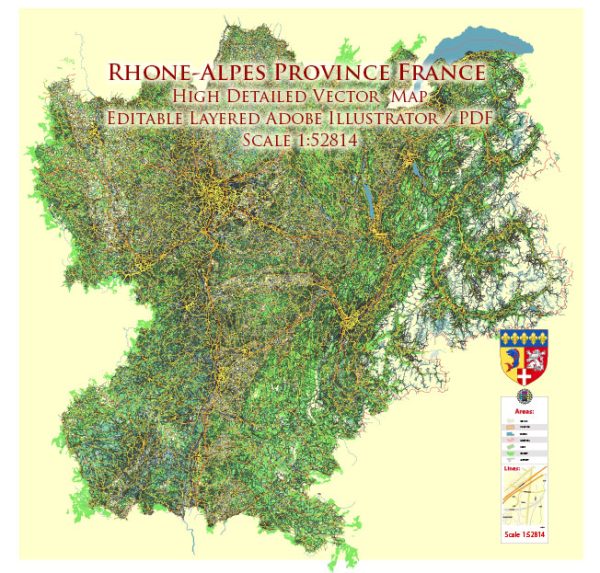The Rhône-Alpes region in France is known for its diverse and complex geology, which has shaped its landscape and natural features. This region, located in the southeastern part of France, encompasses a wide variety of geological formations, including mountains, valleys, plateaus, and plains. Here’s a brief description of the geology of the Rhône-Alpes region:
- Alps Mountains: The Rhône-Alpes region is dominated by the Alps, one of the most prominent mountain ranges in Europe. The Alps are primarily composed of crystalline rocks, such as granite and gneiss, as well as sedimentary rocks like limestone and shale. These mountains have been formed by the collision of the Eurasian and African tectonic plates, leading to intense folding and faulting processes. The Mont Blanc, the highest peak in the Alps, is located in this region.
- Jura Mountains: In the northern part of Rhône-Alpes, the Jura Mountains form another significant geological feature. These mountains are older than the Alps and consist of limestone and marl formations. They were shaped through the deposition of sediments in ancient seas, followed by tectonic activity.
- Rift Valleys: The region is also characterized by rift valleys, such as the Rhône Valley. These valleys were formed due to the extension of the Earth’s crust and are often associated with faulting and the movement of tectonic plates. The Rhône River flows through this valley.
- Plateaus and Plateau Basins: Between the mountain ranges and valleys, you can find plateaus and plateau basins, which consist of a variety of sedimentary rocks, including sandstone, limestone, and marl. These areas were shaped by erosion and sedimentation processes over millions of years.
- Volcanic Activity: In the Massif Central region of Rhône-Alpes, there are remnants of ancient volcanic activity. These volcanic formations include basalt plateaus and volcanic cones, which were active millions of years ago.
- Glaciations: During the Quaternary period, the region was heavily influenced by glaciations. The movement of glaciers has left behind a variety of glacial features, such as U-shaped valleys, moraines, and cirques, especially in the high mountain areas.
- Karst Landscapes: Limestone formations in the Jura Mountains and other areas of the region have given rise to karst landscapes, characterized by caves, sinkholes, and underground rivers. This geology has led to the formation of stunning cave systems like the Grotte de Choranche.
The geological diversity of the Rhône-Alpes region has not only influenced its stunning natural scenery but also played a role in shaping its cultural heritage, economic activities, and environmental conservation efforts. This rich geological history makes the region a fascinating place for geologists, tourists, and outdoor enthusiasts alike.


 Author: Kirill Shrayber, Ph.D.
Author: Kirill Shrayber, Ph.D.